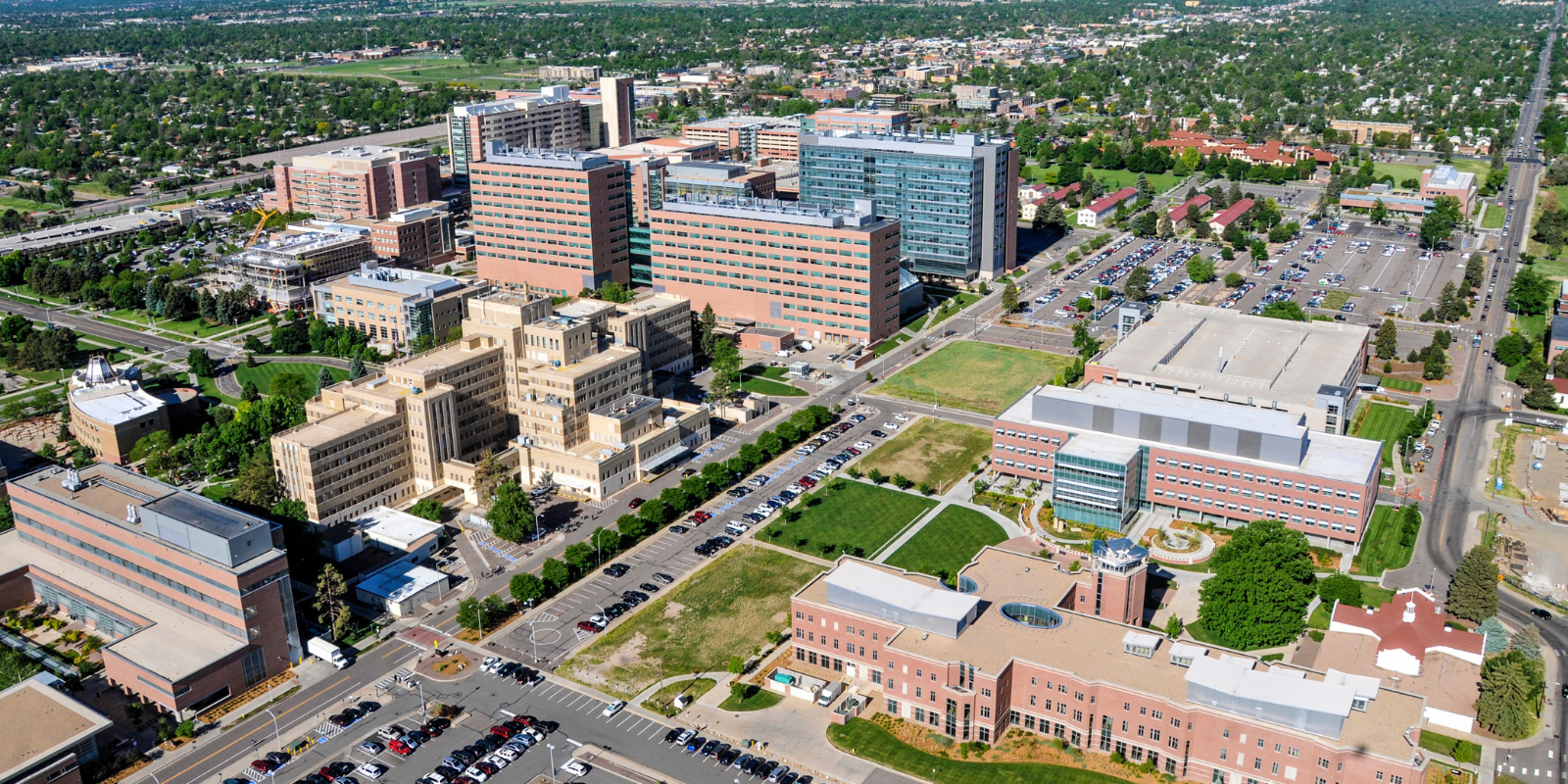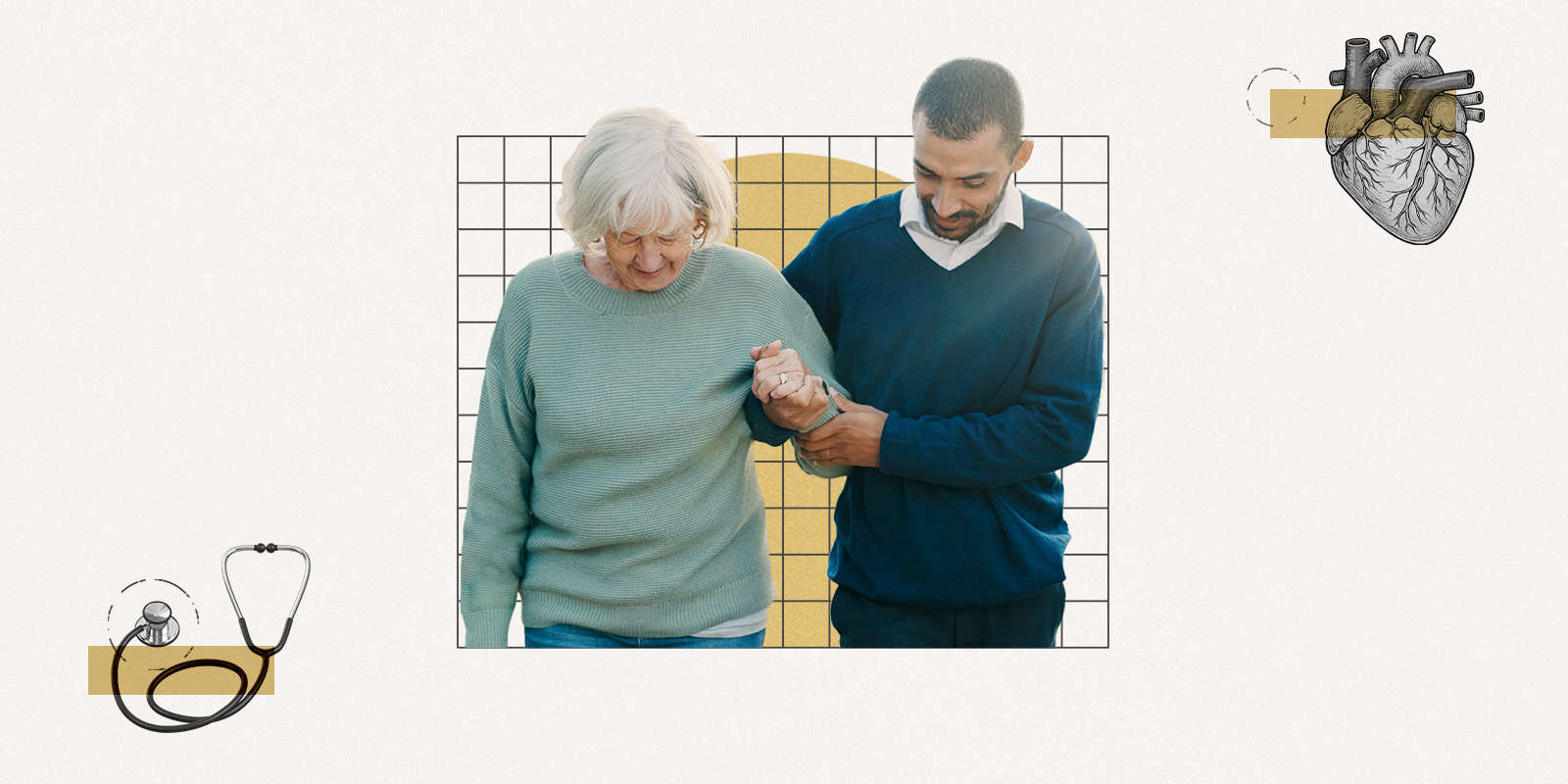The possibilities of artificial intelligence seem endless, and the University of Colorado Anschutz Medical Campus community gathered on Feb. 18 to consider how, as Chancellor Don Elliman put it, “to unlock the promise of AI while at the same time minimizing the potential dangers of it.”
Campus leadership’s impetus for the conference, “Engaging with AI: Learning, Adapting and Growing Together at CU Anschutz,” was two-fold: to demystify AI and to provide guidance about approved applications so employees can feel confident in exploring and using AI tools.
About 500 campus community members joined the event online and in-person in the auditorium of Education 2 South.
Bill Quinn, a futurist and foresight strategist with Tata Consultancy Services, presented on “Reimagining the Future.” Quinn has more than 25 years of leadership experience and helps business leaders “connect the dots” to reimagine and navigate the future.
“We're a stubborn species. We don't necessarily like change. We're also astonishingly versatile when it's foisted upon us. We have the ability to adapt really well, but we need a framework for understanding where the future might be headed.”
– Bill Quinn, futurist and foresight strategist
With examples of cutting-edge applications of AI, such as digital twin technology (offering a virtual representation of a human heart, for instance) and the ability to interact virtually with deceased loved ones, he emphasized that people will need to keep pace with the changes AI will bring to the ways we live and work.
“I mentioned that we're a stubborn species. We don't necessarily like change,” Quinn said. “We're also astonishingly versatile when it's foisted upon us. We have the ability to adapt really well, but we need a framework for understanding where the future might be headed.”
AI tools in use on campus
Next, Chief Information Officer and Vice Chancellor Christopher Smith and Deputy CIO and Assistant Vice Chancellor Michael G. Miller – both from Information Strategy and Services – catalogued the AI tools available to employees, as well as those that are not allowed for university work or that require special review and security planning. They strongly encouraged employees to dive into university-approved AI applications and to provide feedback about user experiences.
Ethics of AI
Matthew DeCamp, MD, PhD, an associate professor at the Center for Bioethics and Humanities and in the Division of General Internal Medicine at the CU School of Medicine, spoke about the ethics of AI, offering examples of ethics guidelines and principles, and emphasizing the complexity of practicing ethics in AI. Key themes in his presentation were transparency, choice and agency. He challenged attendees to consider whether AI frees people to make their own choices or binds them to their past choices and preferences. Finally, DeCamp cautioned that biased datasets lead to biased analyses and ultimately to biased outputs and uses.
AI in research
Jayashree Kalpathy-Cramer, PhD, professor and chief of the Division of Artificial Medical Intelligence, Ophthalmology, and director of Health Informatics at the Colorado Clinical and Translational Sciences Institute, shared how she uses AI in her ophthalmology research and clinical care. She spoke about “oculomics,” which is the study of the eye through advanced imaging and AI technologies and has significant potential to detect systemic diseases early, often even before the symptoms are apparent.
“The idea with oculomics is essentially you can take a picture of the back of somebody's eye and gain a lot more information about that person. AI can tell you how old they are, whether they're male or female, whether they're a smoker, what their risk of heart disease is,” Kalpathy-Cramer said.
Yanjun Gao, PhD, assistant professor of Biomedical Informatics, presented “Beyond the Hype: Evaluating and Advancing AI for Clinical Workflows and Decision Support.” She discussed how large language models (LLM) are used currently in clinical practice but noted that AI struggles with long and complex patient histories. Gao emphasized the importance of designing good prompts – or instructions for AI models to produce specific outputs – but acknowledged the difficulty due to the trial-and-error nature of refining prompts. Also, she cautioned that a good prompt for a human does not always translate to a good prompt for an LLM.
AI in health sciences education
Lisha Bustos, director of Digital Learning in the Office of Digital Learning, moderated a panel discussion about the use of AI in health sciences education. Panelists Benjamin Crocket, DMD, MS, assistant professor at the CU School of Dental Medicine; Heather Anderson, PhD, associate professor and director of Assessment and Outcomes, and Sunny Linnebur, PharmD, FCCP, professor – both at the Skaggs School of Pharmacy and Pharmaceutical Sciences; and Ryan A. Peterson, PhD, MS, and Antonio R. Porras, PhD, both assistant professors in the Department of Biostatistics and Informatics at the Colorado School of Public Health, all shared examples of successes in integrating AI into class assignments, including simulating patient interactions, comparing answers to prompts in ChatGPT versus Microsoft Copilot, and trialing variations of prompts to compare differences in answers.
Best poster awards
The conference concluded with Vice Chancellor for Research Thomas Flaig, MD, announcing the winners of the best poster contest for each of three categories:
- Best Poster for AI in Administration: “Enhancing Professionalism in Online Learning: AI-Generated Zoom Etiquette” by Rachel Wagmaister, MS, manager, Office of Continuing Education and Professional Development, Skaggs School of Pharmacy and Pharmaceutical Sciences.
- Best Poster for AI in Health Sciences Education: “Empathy in Action: AI Avatars: Transforming Social-Emotional Patient Communication in Medical Education” by Clint Carlson, MS, director of Digital Education Innovations, School of Medicine (SOM); Elshimaa Basha, MPH, CHSE, director, Center for Advancing Professional Education (CAPE), SOM; Rebecca Dehne, PT, DPT, faculty resident, Physical Therapy, SOM; Michael Lampe, EdD, program director of Digital Education and Academic Technology, SOM; Jill Liss, MD, associate clinical professor, OB-GYN-Gyn & OB Health, SOM; and Tanya D. Russell, PhD, curriculum manager, CAPE, SOM.
- Best Poster for AI in Research: “Generalizability of Deep Learning Segmentation of the Trabecular Compartment in Mouse Vertebral Body Across Micro-Computed Tomography Image Resolutions” by Michael David and Douglas Adams, Department of Orthopedics, SOM.
Photo at top: Lisha Bustos, far right, moderates a panel discussion about the use of AI in health sciences education.
.png)

